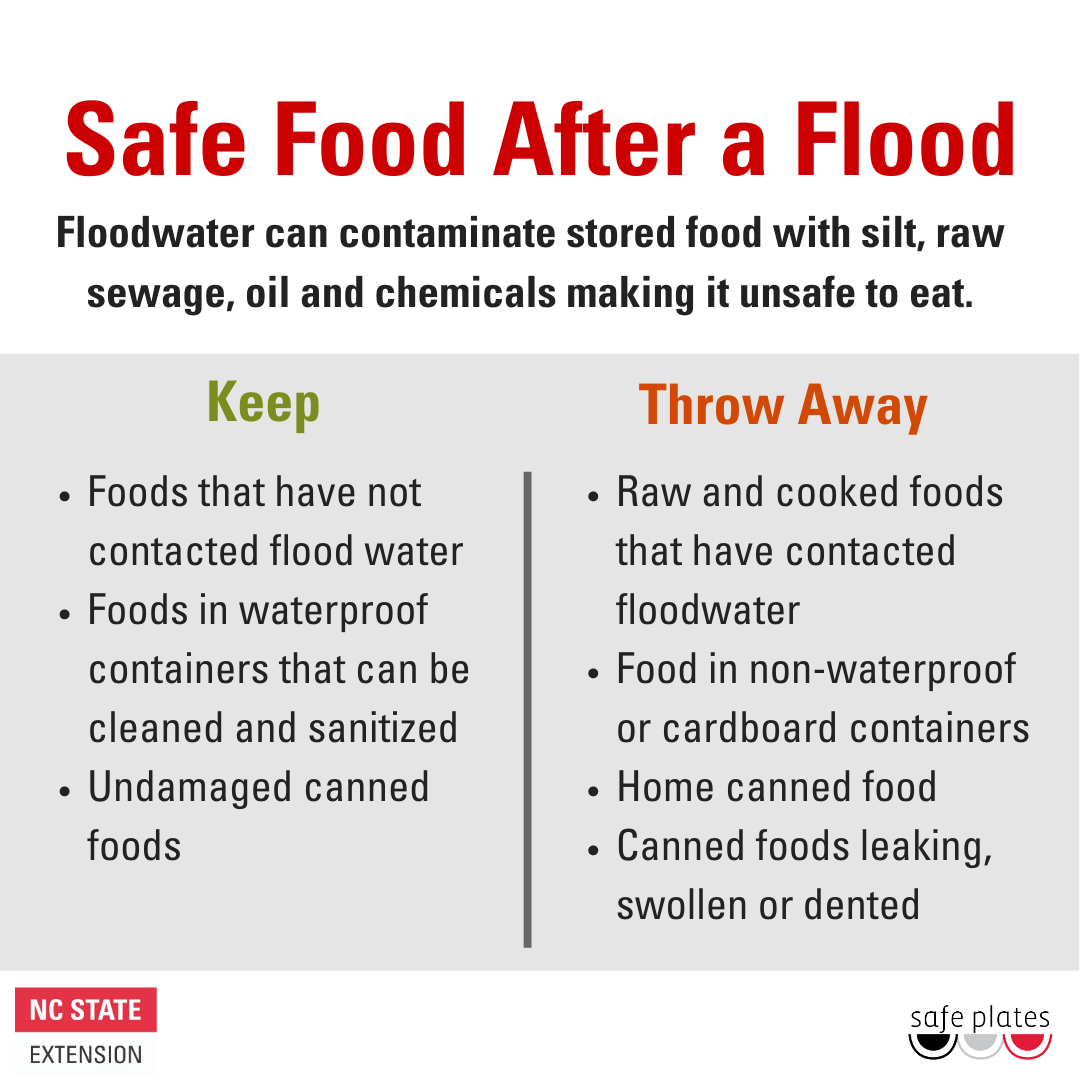Food Safety Concerns With Power Outages and Floodwater From a Storm
go.ncsu.edu/readext?717553
en Español / em Português
El inglés es el idioma de control de esta página. En la medida en que haya algún conflicto entre la traducción al inglés y la traducción, el inglés prevalece.
Al hacer clic en el enlace de traducción se activa un servicio de traducción gratuito para convertir la página al español. Al igual que con cualquier traducción por Internet, la conversión no es sensible al contexto y puede que no traduzca el texto en su significado original. NC State Extension no garantiza la exactitud del texto traducido. Por favor, tenga en cuenta que algunas aplicaciones y/o servicios pueden no funcionar como se espera cuando se traducen.
Português
Inglês é o idioma de controle desta página. Na medida que haja algum conflito entre o texto original em Inglês e a tradução, o Inglês prevalece.
Ao clicar no link de tradução, um serviço gratuito de tradução será ativado para converter a página para o Português. Como em qualquer tradução pela internet, a conversão não é sensivel ao contexto e pode não ocorrer a tradução para o significado orginal. O serviço de Extensão da Carolina do Norte (NC State Extension) não garante a exatidão do texto traduzido. Por favor, observe que algumas funções ou serviços podem não funcionar como esperado após a tradução.
English
English is the controlling language of this page. To the extent there is any conflict between the English text and the translation, English controls.
Clicking on the translation link activates a free translation service to convert the page to Spanish. As with any Internet translation, the conversion is not context-sensitive and may not translate the text to its original meaning. NC State Extension does not guarantee the accuracy of the translated text. Please note that some applications and/or services may not function as expected when translated.
Collapse ▲Tropical storms, floods, and other natural disasters can cause power outages and floodwater can bring dangerous compounds into your kitchen that lead to food safety concerns. As storms such as Tropical Storm Isaias approaches, protect your food and family by being prepared.
Four Ways to Prepare for a Power Outage
- Purchase or locate thermometers. Place a thermometer in your refrigerator and freezer; have a tip-sensitive digital thermometer ready to check food temperatures. Foods that can support the growth of pathogens (like cooked vegetables, cooked and raw meats and cut melons, leafy greens, and tomatoes) are riskier after being held above 41ºF for more than 4 hours.
- Check stock of refrigerator. Purchase or prepare food items that don’t require refrigeration and can be eaten cold or heated on an outdoor grill. Store or purchase water in case water systems are impacted resulting in boil water advisories.
- Use bottled/clean water for everything from brushing teeth, cooking.
- Prepare coolers and purchase ice and dry ice. Use dry ice to extend the amount of time food stay below 41ºF. Freeze containers of water for ice or purchase ice.
Floodwater and Food after a Storm
Floodwater can bring silt, raw sewage, oil, and chemical wastes into your home. These compounds can leave dangerous bacteria or chemicals on your food or utensils and equipment such as pots, pans, serving and storage containers making food unsafe to eat. Knowing what food to keep or toss along with proper cleaning and sanitizing can help ensure the food you eat is safe.

Helpful Resources
Meal Prep and Food Safety After Power Failure From a Hurricane Fact Sheet
Recovering from a Hurricane: Refrigerated and Frozen Foods Fact Sheet
Food Safety When the Power Goes Out Video
Kitchen Clean Up After a Flood Fact Sheet
Safe Food For After a Flood Fact Sheet
Food Safety After a Flood Video
Visit our Disaster Preparedness page for more information and resources and follow us on our @SafePlatesFSIC social media handles (FB, Twitter, and Instagram). This page provides resources for how to handle food when disaster strikes.


